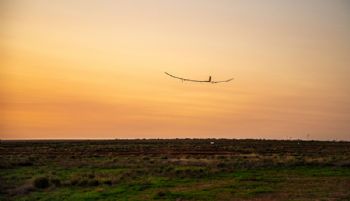
Last month, PHASA-35 (Persistent High Altitude Solar Aircraft) — a 35m-wingspan solar-electric aircraft with the potential to stay airborne for a year — successfully completed its maiden flight.
This new aircraft is intended to be a game changer, “plugging the gap between aircraft and satellite technology”.
PHASA-35 has been designed, built and flown in less than two years, as part of a collaboration between BAE Systems (
www.baesystems.com) and Prismatic Ltd (
www.prismaticltd.co.uk), which the former ‘agreed to acquire’ last year.
Designed to operate unmanned in the stratosphere (above the weather and conventional air traffic), PHASA-35 “offers a persistent and affordable alternative to satellites, combined with the flexibility of an aircraft”.
Its potential applications include forest fire detection, maritime surveillance, border protection, disaster relief and the delivery of communications networks.
Sponsored by the UK’s Defence Science and Technology Laboratory and Australia’s Defence Science and Technology Group, the successful flight trials took place at the Woomera Test Range in South Australia.
As a High Altitude Long Endurance vehicle, PHASA-35 is powered by the Sun during the day and by batteries overnight.
The long-life battery and highly efficient solar technology could allow the aircraft to maintain flight in the stratosphere for up to a year.
According to BAE Systems, the acquisition of Prismatic formed part of its strategy to develop ‘breakthrough technologies’, making bolt-on acquisitions where they complement existing capabilities and provide an opportunity to ‘accelerate technology development in key areas’.